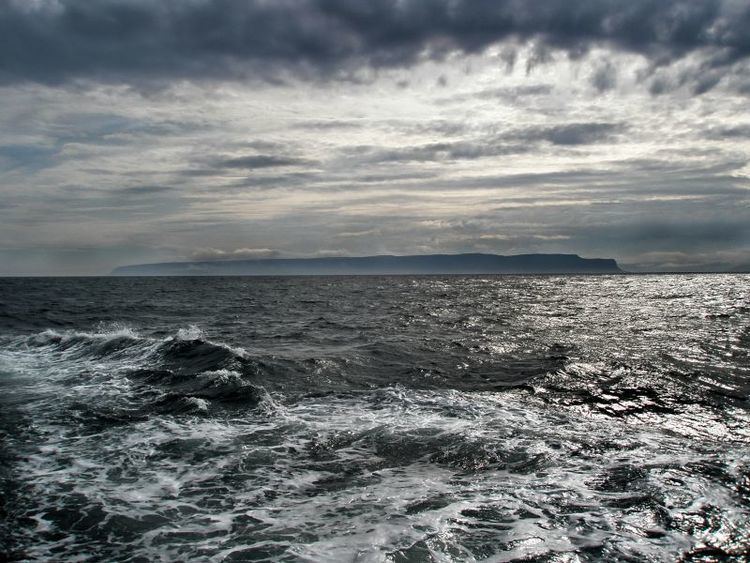 | ||
Kildin (also Kilduin; Russian: Кильдин) is a small Russian island in the Barents Sea, off the Russian shore and about 120 km from Norway. Administratively, Kildin belongs to the Murmansk Oblast of the Russian Federation.
Contents
- Map of Kildin Island Murmansk Oblast Russia 184637
- LighthousesEdit
- OtherEdit
- Notable incidentsEdit
- References
Map of Kildin Island, Murmansk Oblast, Russia, 184637
Kildin Island is a plateau, up to 900 feet in elevation; it drops sharply to the sea on the north. Great granite masses rise from the sea and are carved into broad terraces. In the interior there is a relict lake, Lake Mogil'noe (or Molginoye), which is separated from Kildin Strait by an isthmus through which seawater filters that replenishes the lake. The brackish lake holds a unique species of cod (Gadus morhua kildinensis) that has adapted to it.
The island is 15 km (9.3 mi) long by 5 km (3.1 mi) and 1 km (0.62 mi) wide at the widest part. Kildin Strait, which separates it from the mainland, is 15 km (9.3 mi) long and varies in width from 2 km (1.2 mi) to about 1 km (0.62 mi). The water is deep so anchorage is only possible near the shore. The only safe anchorage is in Monastery Bay, at the South East end of the island. The bay gets its name from a fortified monastery that used to stand there but that the British destroyed in 1809 and of which no trace remains.
According to the Norwegian Organization for the Protection of the Environment, there is a deposit of expended reactors from Soviet nuclear submarines on the island.
LighthousesEdit
There are three lighthouses on the island.
- Kildinskiy Zapadnny (West Kildinsky) is built near the southwest corner of the island and marks the western entrance to the strait between the island and the mainland.
- Kildinskiy Severnny (North Kildinsky) is built on the north side of the island, about 25 km (15 mi) east of the entrance to Kola Bay.
- Kildinskiy Vostochny (East Kildinsky) is on the southeastern side of the island, near the settlement of Vostochny Kildin.
OtherEdit
The island gave its name to the Kildin-class of Soviet destroyers.
